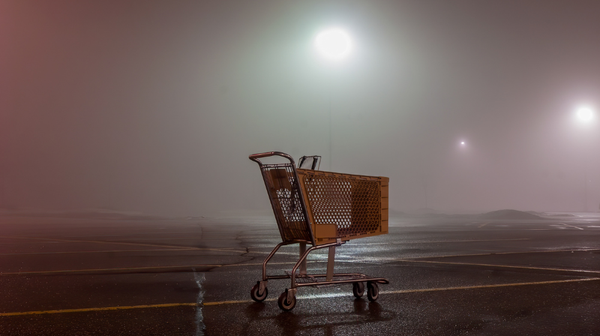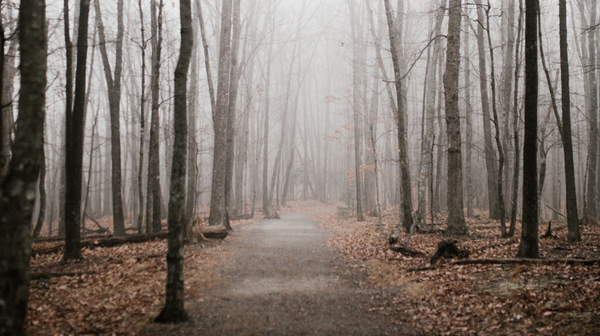The paranormal genre is where immersive worldbuilding thrives and supernatural entities like vampires, witches, demons, faeries, and more come alive. And it’s more than just ghost stories. If science can’t explain it, it’s paranormal—and there’s a lot to explore that science can’t explain. If you’re ready to craft a paranormal thriller that will haunt your readers’ dreams, read on.
Study the structure of a great paranormal story
It’s generally agreed on that there are eight key scenes essential to a successful paranormal story:
1. The opening scene
The inciting incident in paranormal fiction is the eerie spark that sets your story in motion. It's the moment when the protagonist's ordinary life collides with the supernatural, whether it's a ghostly encounter in a haunted house, the mysterious disappearance of a loved one, or a chilling discovery that defies explanation.
2. The first plot point
This scene is the cornerstone of your paranormal plot, the revelation that propels your characters into the heart of the mystery. It's the point where they realize they're dealing with something otherworldly or inexplicable, and they can no longer ignore the haunting truth.
3. The first reversal
Around the 25% mark of your story, introduce the first significant encounter with the supernatural. It could be a ghostly apparition, a cryptic message from the beyond, or the eerie manifestation of psychic powers. This encounter hooks readers and draws them deeper into your paranormal world.
4. The midpoint
At the halfway point, it's time for a paranormal twist that raises the stakes. This could involve uncovering hidden truths about the supernatural phenomenon or discovering a portal to another realm. It's the moment that keeps readers guessing and eager to uncover the story's secrets.
5. The second reversal
Around the 75% mark, introduce another significant paranormal development. This might involve a terrifying confrontation with a vengeful spirit, a critical revelation about the source of the haunting, or a high-stakes psychic showdown. This plot point keeps the suspense building as you approach the story's climax.
6. The third plot point
In paranormal fiction, the climax is where the supernatural conflict reaches its peak. Whether it's a psychic battle against dark forces or a heart-pounding pursuit by supernatural entities, this is the moment your readers have been anxiously waiting for.
7. The climax
After the paranormal storm subsides, your story needs to address the aftermath and the lingering effects of the supernatural events. This may involve restoring order to a world plagued by supernatural chaos, or exploring the consequences of meddling with forces beyond human understanding.
8. The resolution
Every good paranormal story needs closure. The resolution ties up loose ends, provides answers to paranormal mysteries, and offers a glimpse into the future of your characters and the haunted world you've created. It's the final, satisfying note that leaves readers with a sense of closure and lingering shivers down their spines.
Research paranormal lore
Before you dive headfirst into your paranormal thriller, immerse yourself in the rich tapestry of paranormal lore. Explore myths, legends, and supernatural phenomena. The more you know, the more you can infuse your story with authenticity and spine-tingling details. Consider exploring aspects of common lore, like Chi, Chakras, the Evil Eye, and crystals.
Craft unique paranormal creatures
Paranormal creatures are the lifeblood of your story. Take inspiration from classic folklore and then put your own twist on it. Create creatures—like ghosts, vampires, angels, shadow people, mummies, and more—that are both terrifying and intriguing, giving your readers a fresh and unforgettable experience.
Develop a complex supernatural world
Paranormal creatures are the lifeblood of your story. Take inspiration from classic folklore and then put your own twist on it. Create creatures—like ghosts, vampires, angels, shadow people, mummies, and more—that are both terrifying and intriguing, giving your readers a fresh and unforgettable experience.
Explore the human element
While the paranormal is a central focus, don't forget the human element. Develop relatable and multi-dimensional characters with their own fears, desires, and conflicts. Readers should connect with the characters as they navigate the paranormal chaos. Your paranormal story could intersect from the real world, too.
Use atmospheric descriptions
Set the mood with atmospheric descriptions. Paint vivid pictures of eerie landscapes, haunted houses, and moonlit forests. Make your readers feel like they're right there, experiencing the paranormal phenomena firsthand.
Build suspense gradually, drop clues, and foreshadow
Patience is key in the paranormal thriller genre. Gradually build suspense by introducing small, unexplained events and gradually escalating the supernatural occurrences. Drop subtle clues and foreshadowing throughout your story too. Make sure your readers have the opportunity to piece together the puzzle, but keep them guessing until the very end.
Unleash terrifying encounters
Patience is key in the paranormal thriller genre. Gradually build suspense by introducing small, unexplained events and gradually escalating the supernatural occurrences. Drop subtle clues and foreshadowing throughout your story too. Make sure your readers have the opportunity to piece together the puzzle, but keep them guessing until the very end.
Embrace the unexplained
In the world of paranormal thrillers, not everything needs to be neatly explained. Embrace the unexplained and leave some mysteries shrouded in darkness. It's the unknown that lingers in your readers' minds long after they've finished the story.
Crafting a captivating paranormal story is all about blending the supernatural with the human, creating an immersive world, and keeping readers on the edge of their seats with suspense and mystery. So, grab your laptop, summon your paranormal creatures, and let the paranormal world come to life on the pages.
Get more tips on writing genres of darkness in our Into the Dark: Creator Toolkit.





















